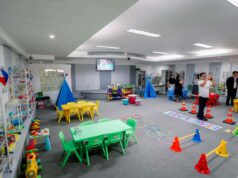ANGELES CITY- The tight supply of LPG (liquefied petroleum gas) in the country will significantly ease up by Friday after three ships, which bad weather prevented from docking at the ports of Mariveles, Bataan way back last Aug. 2, have started to unload their cooking gas cargo.
In a press conference here yesterday, LPG Refillers Association of the Philippines, Inc. (LPG-RAP) president Bernardo Bolisay said that the three ships loaded with some 7,500 metric tons of LPG from Singapore and Taiwan were finally able to dock at the pier of Liquigaz Philippines, Corp. in Mariveles.
“The three ships arrived last Aug. 2, but they were only small ships that were prevented from docking at the pier because of winds over 10 knots in the area arising from typhoon Gener and the monsoon rains,” Bolisay said.
“There never was a shortage nor was there any hoarding. It was a case of nature preventing the distribution of LPG supply already within Philippine territory,” he stressed, debunking an earlier allegation of an official of the Department of Energy blaming hoarding for the tight supply.
Bolisay said the tight supply already eased up last Friday when a bigger ship containing 17,000 metric tons of LPG was able to dock and unload in Mariveles. And then last Monday, improved weather also enabled the three stranded smaller ships to unload.
“I expect the LGP supply for households nationwide will stabilize by this Friday,” Bolisay said.
He noted that when the big ship arrived last Friday, as many as 180 lorries lined up for LPG supply at Liquigaz. “As of last Tuesday, the number has decreased to only 50 lining up and I expect this to even decrease as they are loading up at the rate of four lorries at a time,” he added.
Bolisay said that of the country’s consumption of about 100 million kilograms of LPG monthly, only about 30 percent are produced by big multinational firms such as Petron and Solane, formerly Shellane which, however, at times obtain more supplies also from Liquigaz whose storage capacity is for 12 million kilograms.
“While the capacity of Liquigaz is very limited, ships mostly from Singapore and Taiwan frequently come to replenish its supply,” he noted.
He said that Petron and Solane LPG cater mostly to commercial users, while his group of “independent refillers” caters to household users which consume about 30 percent of the 100 million kilo demand monthly in the country.
Bolisay said that out of about 180 LPG plants nationwide, about 120 are independent refillers, or those getting their supplies outside the multinational sources.
“Our price depends really on prices in the international market. In Luzon at present, an 11-kilo LPG tank cost about P680 to P700 but in the Visayas and Mindanao, it normally costs P1,000 or even more,” he said, pointing to transport cost as bases for the higher prices.
This, even as Bolisay urged Congress to amend the Oil Deregulation Law to cover LPG. “LPG is covered by this law, so that refillers can’t do anything as the cost is dictated by our suppliers,” he lamented.




